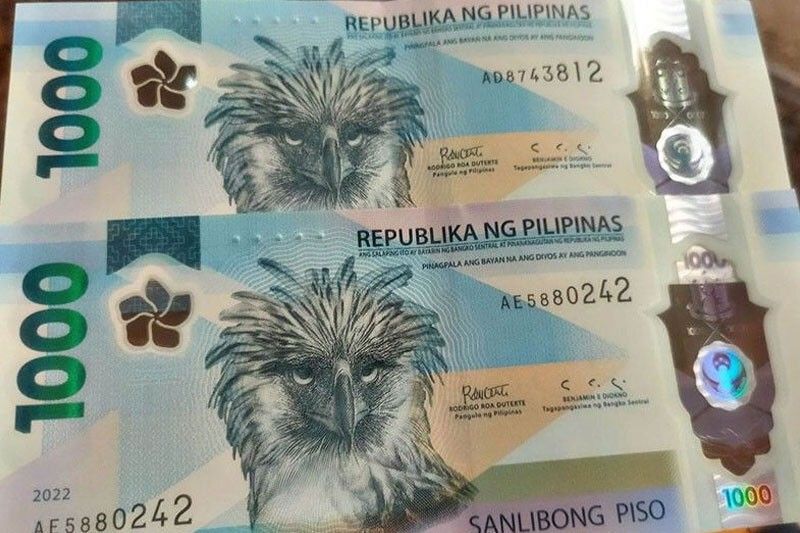Philippines debt seen ballooning to P15.84 trillion by next year

MANILA, Philippines — The national debt will continue to grow and balloon to a record P15.84 trillion by 2024, government estimates show.
Based on the Budget of Expenditures and Sources of Financing (BESF) data following the submission of the P5.768-trillion proposed budget for 2024, the country’s outstanding obligations would reach P14.62 trillion by the end of this year and further increase to P15.84 trillion by end-2024.
In terms of growth, however, the pace of debt accumulation would slow down.
Debt soared by 26.7 percent to P9.795 trillion during the first year of the pandemic in 2020 and increased by 19.73 percent to P11.728 trillion a year later. This started to slow by 14.4 percent and hit P13.42 trillion by end-2022.
Projected debt is expected to pick up by 8.97 percent to P14.62 trillion by the end of this year and will grow by 8.33 percent to hit P15.84 trillion by 2024.
Currently, the national debt stock is at its highest level to date at P14.15 trillion as of end-June.
ING Bank senior economist Nicholas Mapa said the 2024 debt forecast may increase further, considering that the government is also predicting that this year’s level may be overshot.
“This, against a backdrop of slowing GDP (gross domestic product) growth could mean that debt-to-GDP ratios could inch up or are flat, which could get the attention of ratings agencies,” Mapa said in a Viber message.
On the other hand, Rizal Commercial Banking Corp. chief economist Michael Ricafort noted that the slower growth in outstanding debt is largely due to the further reopening of the economy from the pandemic.
“This is due to increased tax revenue collections with higher business and economic activities, as well as reduced government spending on COVID-related programs,” Ricafort said.
The country’s debt level, when measured against GDP, is at 61 percent in the first quarter, which is better than the 63.5 percent in the same period last year, but slightly above the end-2022 debt-to-GDP ratio of 60.9 percent.
Still, the current debt-to-GDP ratio remains above the internationally accepted threshold of 60 percent, which still puts the Philippines in a vulnerable spot in terms of its capacity to pay off its financial obligations.
A good credit standing for the country would mean that the government can avail itself of loans at better terms and longer grace periods due to its ability to pay its obligations.
Ricafort said more tax revenue collections and other reform measures could help the government lessen its dependence on borrowings.
Mapa also noted that additional revenue streams would be welcome in terms of helping chase fiscal consolidation for the Philippines.
“However, given the magnitude of the debt currently, we may need to see a wide-scale tax increase like the one previously deployed to lower the debt-to-GDP when it crested 70 percent in 2004,” Mapa said.
In that year, then president Gloria Macapagal-Arroyo, who was facing a fiscal crisis, hiked the value-added tax to 12 percent and expanded its coverage to more commodities.
The Marcos administration, on the other hand, has yet to impose hard-hitting taxes, and has only insisted that tax administration would be strengthened.
Under the government’s fiscal framework, proposed tax measures include the remaining packages under the Comprehensive Tax Reform Program of the Duterte administration.
The economic team is also moving to impose value-added tax on digital service providers, excise taxes on single-use plastics, and excise taxes on pre-mixed alcohol.
Additional revenue-generating measures also include the imposition of higher excise taxes on sweetened beverages and salty food, rationalization of the motor vehicle road user’s tax, and reforms to the mining fiscal regime.
To complement these, the government is pursuing expenditure reforms, such as the rightsizing program and the reforms to the military and uniformed personnel pension system to widen the fiscal space.
Based on the BESF, of the P15.84 trillion outstanding debt by 2024, 69 percent or P10.89 trillion will be from domestic sources while the remaining P4.95 trillion will come from external obligations.
The BESF also showed that the government targets to settle a record P1.91 trillion in debts, divided into P670.47 billion for interest payments and P1.24 trillion for principal amortization.
This will be 23 percent higher than the P1.55 trillion target debt service for 2023.
- Latest
- Trending























